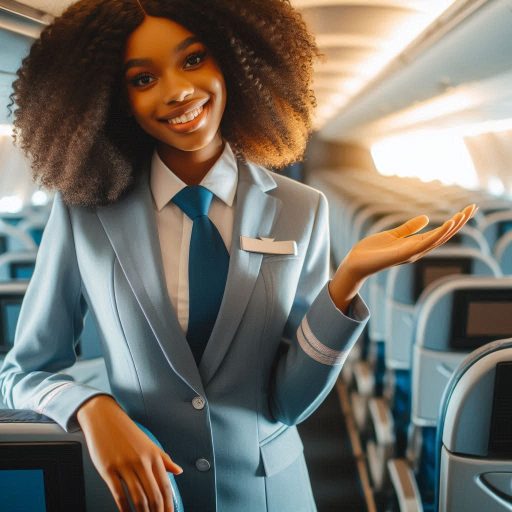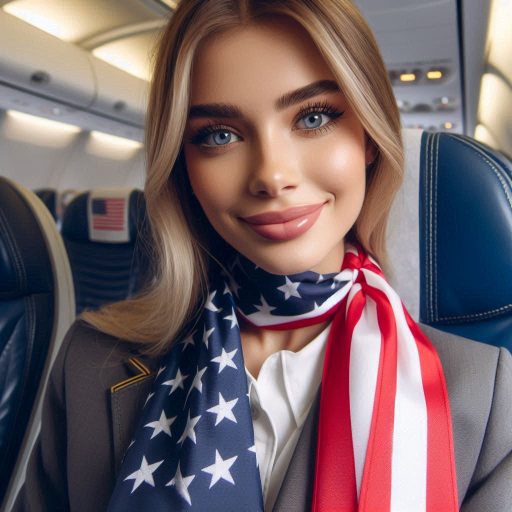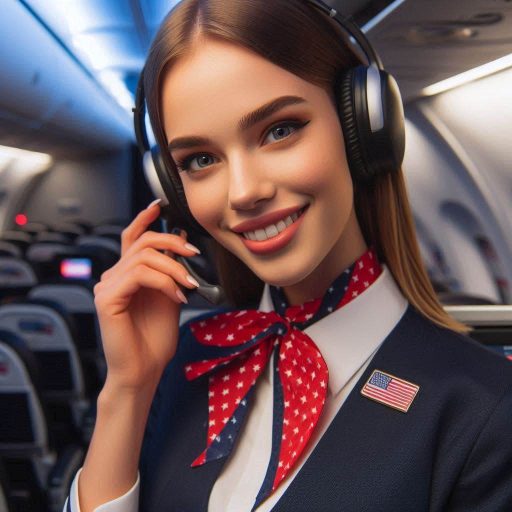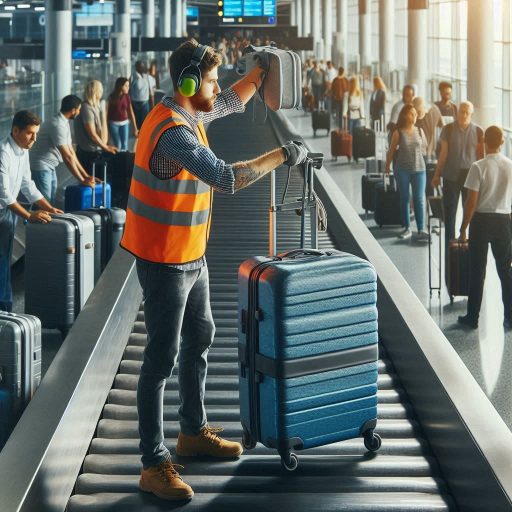Introduction
The history of flight attendant uniforms dates back to the early days of commercial aviation in the 1920s.
Initially, uniforms were designed to convey professionalism and authority, often resembling military attire.
As the industry progressed, airlines began to recognize the value of distinctive uniforms in branding and passenger experience.
This led to a shift towards more stylish and functional designs that reflected changing societal norms and fashion trends.
Uniforms play a crucial role in the airline industry.
They not only establish a professional image but also create a sense of identity for both the airline and its employees.
A well-designed uniform enhances customer service, instills confidence in passengers, and reinforces the airline’s brand values.
This blog will explore the evolution and style of flight attendant uniforms over the years.
We will examine how these uniforms have transformed from their formal origins to the modern, fashionable designs we see today, reflecting both the industry’s growth and the changing expectations of passengers.
Early Years: 1920s-1950s
Introduction of Flight Attendant Profession
The flight attendant profession emerged in the 1920s, marking a significant shift in air travel.
Airlines recognized the need for trained personnel to ensure passenger safety and comfort.
Early flight attendants, often called “stewardesses,” were primarily women, reflecting societal norms of the time.
Uniforms Inspired by Military and Nurse Uniforms
Uniforms for these pioneering professionals drew inspiration from military and nurse attire.
The military influence emphasized discipline and authority, which airlines wanted to project.
Nurses’ uniforms highlighted care and professionalism, traits crucial to the new role.
These design choices communicated a sense of reliability and safety to passengers.
Professionalism and Safety
The emphasis on professionalism remained strong throughout the early years.
Airlines wanted their attendants to embody the spirit of service.
Uniforms needed to reflect authority, warmth, and competence.
This focus fostered trust between passengers and crew, essential for the industry’s growth.
Influence of Fashion Trends of the Time
As air travel became more popular in the 1940s and 1950s, uniforms evolved to reflect changing tastes.
Bold colors and patterns emerged, moving away from the more subdued styles of earlier decades.
Designers began experimenting with fabrics, introducing comfortable materials that allowed for ease of movement.
This change acknowledged the demands of the job while maintaining a stylish appearance.
Fashion icons of the era influenced the design of flight attendant uniforms.
The glamour of Hollywood and the elegance of high society inspired many airlines.
They sought to create an aspirational image for their brand.
Consequently, flight attendants became symbols of modernity and sophistication.
Airlines also recognized the power of branding through uniform design.
Uniforms served as a visual representation of the airline’s identity.
They played a crucial role in marketing strategies, helping airlines differentiate themselves from competitors.
The importance of a cohesive look became increasingly apparent in the 1950s.
By the end of the 1950s, the flight attendant’s uniform had transformed into a statement of style and professionalism.
This evolution mirrored broader societal changes, including shifts in gender roles and fashion.
The emphasis on safety and comfort remained, but the uniforms now embodied an exciting blend of function and fashion.
The early years of flight attendant uniforms laid the foundation for the profession.
Drawing inspiration from military and nursing attire, these uniforms emphasized professionalism and safety.
As fashion trends evolved, so too did the uniforms, reflecting the changing landscape of air travel.
Read: The Role of Technology in Modern Pet Grooming
Mid-Century Modern: 1960s-1980s
Introduction of Color and Design Elements
The 1960s marked a vibrant era for flight attendant uniforms, characterized by bold colors and innovative design elements.
Airlines began to embrace brighter hues, moving away from the muted tones of previous decades.
This shift reflected a broader cultural movement towards self-expression and individuality.
The introduction of vibrant colors helped airlines stand out, creating visually striking images for passengers.
Design elements also evolved during this period.
Tailored cuts and unique silhouettes became popular, enhancing the overall aesthetic of uniforms.
Some airlines incorporated playful patterns, adding a fun twist to traditional attire.
This focus on style made uniforms more appealing and engaging for both attendants and passengers.
Branding and Corporate Identity
As airlines recognized the importance of branding, flight attendant uniforms became a key element of corporate identity.
Uniforms served as a visual representation of each airline’s image and values.
Airlines aimed to create a cohesive look that aligned with their brand messages.
This branding emphasis led to increased collaboration between airlines and fashion designers.
Renowned designers created exclusive uniforms, adding prestige to the airline’s image.
Flight attendants became brand ambassadors, reinforcing the airline’s identity through their stylish and recognizable uniforms.
Integration of New Materials for Comfort and Functionality
The 1970s and 1980s saw significant advancements in materials used for flight attendant uniforms.
Airlines prioritized comfort and functionality, recognizing the demands of long hours and frequent travel.
New fabrics emerged, offering increased breathability, flexibility, and ease of maintenance.
Uniforms began to feature practical design elements, such as pockets and adjustable fits.
These innovations enhanced the overall comfort of flight attendants, allowing them to perform their duties more effectively.
The focus on comfort reflected a growing understanding of the importance of employee well-being.
Influence of Cultural Movements on Uniform Design
Cultural movements of the time had a profound impact on uniform design.
The rise of the women’s liberation movement in the 1960s influenced how airlines approached their uniforms.
This era encouraged a departure from traditional gender roles, prompting airlines to adopt more practical and empowering designs for female attendants.
Additionally, the vibrant counterculture movements of the 1960s and 1970s inspired playful, unconventional uniform styles.
The influence of music, art, and fashion led to creative designs that reflected the spirit of the times.
These cultural influences made flight attendant uniforms not only functional but also a statement of individuality and modernity.
By the end of the 1980s, flight attendant uniforms had evolved into a fusion of style, comfort, and brand identity.
This transformation mirrored broader societal changes, emphasizing the need for airlines to adapt to the evolving preferences of passengers.
The mid-century modern period laid the groundwork for the continued evolution of flight attendant uniforms in the years to come.
Read: Customer Service Tips for Pet Grooming Professionals
Global Influence: 1990s-2000s
Introduction of International Airlines and Their Unique Uniform Styles
The 1990s marked a significant expansion in the airline industry, with the rise of international airlines.
As air travel became more globalized, airlines sought to establish unique identities through their uniforms.
Each airline’s uniform reflected its culture and values, showcasing distinct styles that set them apart.
This era introduced a diverse range of uniform designs, influenced by the regions in which airlines operated.
For example, Asian airlines often incorporated traditional elements, while European carriers embraced modern aesthetics.
These unique styles allowed airlines to celebrate their heritage and create a strong brand presence in a competitive market.
Diversity and Inclusivity in Uniform Design
With the increasing focus on diversity and inclusivity in the late 1990s and early 2000s, airlines began to rethink their uniform policies.
Many carriers recognized the importance of reflecting the diverse backgrounds of their employees.
This shift led to more inclusive designs that catered to different body types and cultural preferences.
Uniforms became more flexible, allowing attendants to express their individuality while maintaining a professional appearance.
Some airlines offered options for various styles, colors, and accessories.
This emphasis on inclusivity not only fostered a sense of belonging but also enhanced employee morale and engagement.
Integration of Technology for Performance Enhancement
The introduction of new technologies also played a crucial role in the evolution of flight attendant uniforms during this period.
Airlines sought to enhance performance through the integration of innovative materials and design features.
Breathable fabrics with moisture-wicking properties became standard, improving comfort during long flights.
Uniforms began to incorporate functional elements, such as wrinkle-resistant materials and stain-resistant finishes.
These advancements made uniforms easier to maintain and more durable.
The focus on performance enhancement reflected the changing demands of the airline industry and the need for practical solutions.
Influence of Pop Culture on Uniform Trends
Pop culture had a significant impact on uniform trends in the 1990s and 2000s.
Television shows and movies featuring flight attendants contributed to the glamorous image of the profession.
This cultural influence inspired airlines to create stylish and contemporary uniforms that resonated with the public.
Iconic pop culture moments, such as celebrities donning airline uniforms in films, further fueled interest in fashionable designs.
Airlines collaborated with renowned designers to create uniforms that captured the spirit of the times.
As a result, flight attendant uniforms became symbols of modernity, style, and professionalism.
By the early 2000s, the evolution of flight attendant uniforms reflected the industry’s response to globalization, diversity, and technological advancements.
The unique styles and inclusive designs of this era set the stage for continued innovation in uniform design.
As airlines embraced their global identities, flight attendant uniforms became more than just attire; they transformed into powerful symbols of brand identity and cultural expression.
Read: Nail Technician Etiquette: Dos and Don‘ts
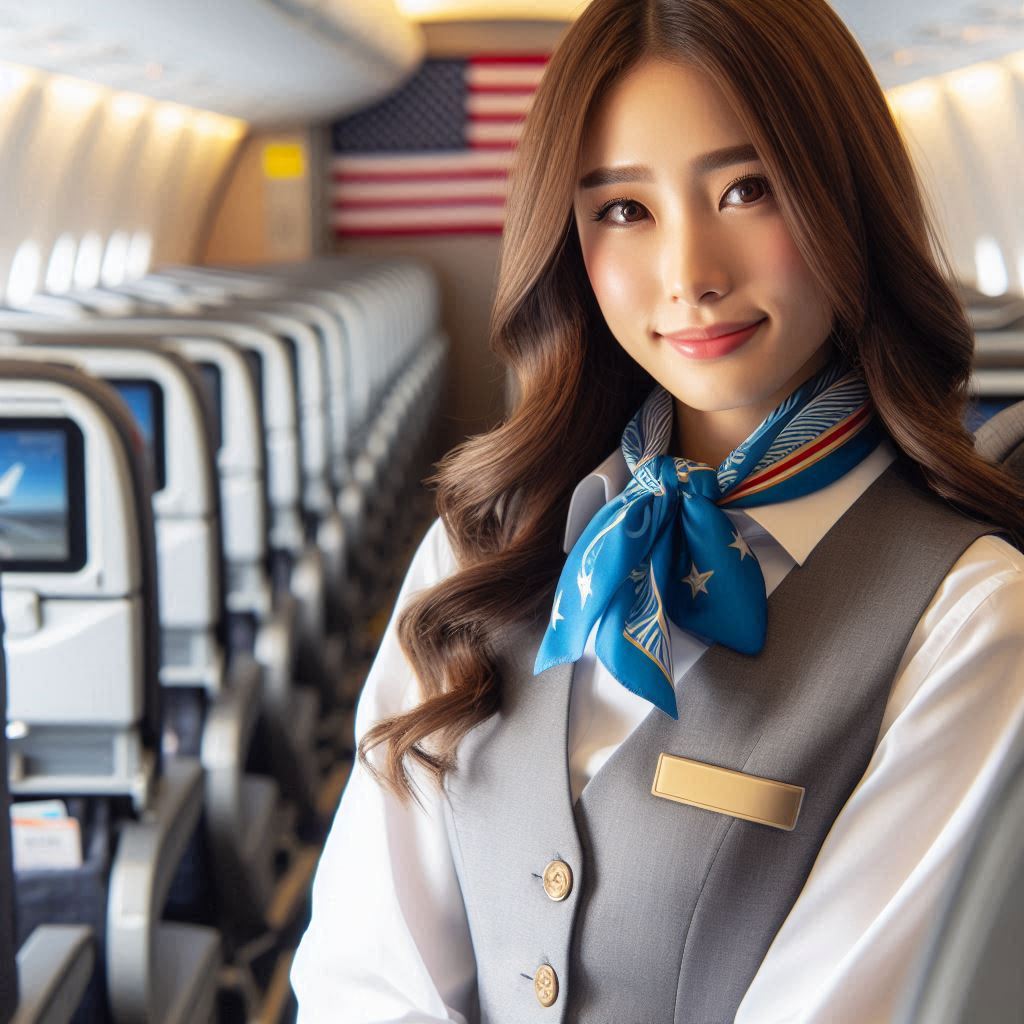
Modern Era: 2010s-Present
Introduction of Eco-Friendly and Sustainable Uniform Options
The modern era has seen a significant shift towards eco-friendly and sustainable practices in the airline industry.
In response to growing environmental concerns, airlines began introducing uniforms made from sustainable materials.
Fabrics sourced from recycled materials, organic cotton, and other eco-conscious textiles became popular choices.
This focus on sustainability reflects a broader commitment to reducing the carbon footprint of the airline industry.
Airlines recognized that offering eco-friendly uniforms not only benefits the environment but also appeals to environmentally conscious consumers.
As a result, many carriers now prioritize sustainable options in their uniform offerings.
Comfort and Flexibility in Design
Comfort and flexibility have become paramount in the design of flight attendant uniforms during this period.
Airlines understand that attendants often work long hours and need uniforms that allow for ease of movement.
As a result, uniform designs now prioritize functionality alongside style.
Modern uniforms often feature ergonomic cuts and stretchable fabrics, ensuring that flight attendants can perform their duties comfortably.
The integration of technology, such as moisture-wicking and temperature-regulating materials, enhances the overall wearing experience.
This emphasis on comfort reflects a growing understanding of employee well-being in the workplace.
Incorporation of High Fashion and Designer Collaborations
The intersection of fashion and aviation has gained prominence in recent years, with airlines collaborating with high-end designers to create stunning uniforms.
Renowned fashion designers have lent their talents to airline uniform projects, resulting in stylish and unique looks.
These collaborations elevate the perception of flight attendants as fashion icons, showcasing their roles as brand ambassadors.
Such partnerships not only enhance the visual appeal of uniforms but also reinforce the airline’s commitment to quality and innovation.
High-fashion elements, like tailored silhouettes and chic accessories, contribute to a modern and sophisticated aesthetic.
This trend highlights the importance of design in shaping the overall passenger experience.
Influence of Social Media and Influencer Culture on Uniform Aesthetics
Social media and influencer culture have significantly impacted uniform aesthetics in the modern era.
Platforms like Instagram and TikTok allow airlines to showcase their uniforms and engage with a wider audience.
This exposure has led to increased scrutiny of uniform design, with passengers often sharing their opinions and preferences online.
Airlines now consider social media trends when designing uniforms.
They aim to create visually appealing looks that resonate with the public and encourage social sharing.
This influence has resulted in more dynamic and eye-catching designs, catering to the desire for stylish and shareable content.
The modern era of flight attendant uniforms reflects a commitment to sustainability, comfort, and high fashion.
The integration of eco-friendly materials and designer collaborations showcases the industry’s evolution.
Additionally, the influence of social media has transformed how airlines approach uniform aesthetics.
As the airline industry continues to adapt, flight attendant uniforms remain a powerful symbol of brand identity and cultural expression.
Transform Your Career Today
Unlock a personalized career strategy that drives real results. Get tailored advice and a roadmap designed just for you.
Start NowRead: Developing Patience and Precision in Pet Grooming
Challenges and Controversies
Criticisms of Objectification and Gender Stereotypes in Uniform Design
Despite advancements in flight attendant uniforms, criticisms regarding objectification and gender stereotypes persist.
Many argue that traditional uniform designs often emphasize feminine aesthetics at the expense of professionalism.
This focus can reduce flight attendants to mere symbols of glamour, overshadowing their vital roles in ensuring passenger safety and comfort.
Critics contend that these uniform designs reinforce outdated gender norms, perpetuating stereotypes about women’s roles in the workplace.
As a result, calls for more equitable and inclusive designs have grown louder, urging airlines to rethink how they approach uniform aesthetics.
Debates Over Appropriate Length and Fit of Uniforms
Debates surrounding the appropriate length and fit of flight attendant uniforms have also emerged.
Discussions often center on what is considered ‘professional‘ versus ‘provocative.
‘ Many airlines have faced scrutiny for enforcing stringent guidelines that may be perceived as sexist or outdated.
This issue highlights the challenge of balancing professionalism with individual expression.
Flight attendants often advocate for uniforms that allow them to feel comfortable and confident while performing their duties.
Finding a compromise between acceptable uniform standards and personal comfort remains an ongoing challenge for the industry.
Struggles with Finding a Balance Between Style and Function
Another challenge in uniform design is finding a balance between style and function.
While airlines aim to create visually appealing uniforms, they must also ensure that these designs meet practical needs.
Flight attendants require uniforms that allow for ease of movement and functionality during their shifts.
The struggle to balance aesthetics with practicality can lead to compromises in design.
For instance, fashionable elements may detract from essential features, like pockets or breathable fabrics.
Airlines must continually assess how to meet both style and functionality to support their staff effectively.
Impact of Current Events (e.g., COVID-19) on Uniform Requirements
Recent events, particularly the COVID-19 pandemic, have had a profound impact on uniform requirements.
Airlines have had to adapt their uniforms to meet new health and safety protocols.
The introduction of face masks, personal protective equipment (PPE), and sanitization measures became necessary to protect both passengers and crew.
These changes raised questions about the practicality and comfort of uniforms.
Airlines faced challenges in sourcing appropriate materials while maintaining brand identity.
As the industry continues to navigate the effects of the pandemic, the focus on health and safety will likely shape future uniform designs.
The challenges and controversies surrounding flight attendant uniforms reflect broader societal issues.
Criticisms of objectification and gender stereotypes highlight the need for more inclusive designs.
Ongoing debates about uniform length and fit, as well as the struggle to balance style and function, emphasize the complexities of this topic.
Current events like the COVID-19 pandemic further influence uniform requirements, prompting airlines to adapt to changing circumstances.
As the industry evolves, addressing these challenges will be crucial for fostering a more equitable and functional work environment for flight attendants.
Uncover the Details: The Role of Social Workers in Healthcare Settings
Future Outlook
Predictions for the Future of Flight Attendant Uniforms
The future of flight attendant uniforms is poised for significant evolution, reflecting broader trends in sustainability, inclusivity, and technology.
As the airline industry continues to adapt to changing societal expectations, uniforms will likely become more than just attire; they will embody an airline‘s commitment to modern values and passenger experience.
Sustainability and Inclusivity in Design
Sustainability will play a critical role in the future of flight attendant uniforms.
Airlines are expected to prioritize eco-friendly materials and manufacturing processes.
Uniforms made from recycled, biodegradable, or organic fabrics will become the norm, aligning with the growing demand for environmentally responsible practices.
Inclusivity will also be a key focus in uniform design.
Airlines will likely offer a range of styles, sizes, and customization options to cater to a diverse workforce.
This approach not only enhances employee satisfaction but also reflects the airline’s commitment to equality and representation.
Integration of Technology for Smart Uniforms
The integration of technology into flight attendant uniforms is on the horizon.
Smart uniforms equipped with wearable technology could enhance the functionality of traditional attire.
Features like temperature regulation, built-in communication devices, or health monitoring sensors may become commonplace.
These advancements will provide flight attendants with tools to perform their duties more effectively.
Additionally, smart uniforms can enhance safety protocols, offering real-time information and support during flights.
Importance of Flexibility and Adaptability in Uniform Design
The need for flexibility and adaptability in uniform design will continue to grow.
As the airline industry faces uncertainties, from health crises to evolving consumer preferences, uniforms must be versatile.
Airlines may adopt modular designs that allow for easy alterations or mix-and-match components to suit different situations.
Future uniforms will need to accommodate various roles and tasks within the airline.
This adaptability ensures that flight attendants can remain comfortable and functional, regardless of changing job demands or external conditions.
The future of flight attendant uniforms promises exciting advancements that reflect contemporary values and technological innovations.
The emphasis on sustainability and inclusivity will shape uniform designs, ensuring they align with the expectations of both employees and passengers.
The integration of smart technology and the importance of flexibility will further enhance the functionality and appeal of uniforms.
As the airline industry continues to evolve, flight attendant uniforms will remain a vital aspect of brand identity and employee experience.
Conclusion
Flight attendant uniforms have evolved significantly over the years, reflecting changes in style, function, and airline branding.
In the early days of aviation, uniforms were formal and militaristic, emphasizing discipline and authority.
As the industry grew, so did the designs, shifting towards more stylish and comfortable attire that aligned with cultural trends.
Today, uniforms range from chic and tailored looks to vibrant and trendy styles, showcasing each airline’s unique identity.
These uniforms serve more than just aesthetic purposes.
They symbolize professionalism and commitment to service, creating a sense of trust and reliability among passengers.
The evolution of flight attendant uniforms also mirrors broader societal changes, highlighting the importance of inclusivity and representation within the airline industry.
As uniform design continues to evolve, it‘s essential to appreciate its impact on both fashion and functionality.
Take a moment to explore and celebrate the artistry behind these iconic uniforms.
Dive deeper into the world of airline attire and recognize their significance in shaping travel experiences.
[E-Books for Sale]
The Big Book of 500 High-Paying Jobs in America: Unlock Your Earning Potential
$19.99 • 500 High-Paying Jobs • 330 pages
Explore 500 high-paying jobs in America and learn how to boost your career, earn more, and achieve success!
See All 500 High-Paying Jobs of this E-Book
1001 Professions Without a Degree: High-Paying American Jobs You Can Start Now
$19.99 • 1001 Professions Without a Degree • 174 pages
Discover 1001 high-paying jobs without a degree! Unlock career tips, skills, and success strategies for just $19.99!

